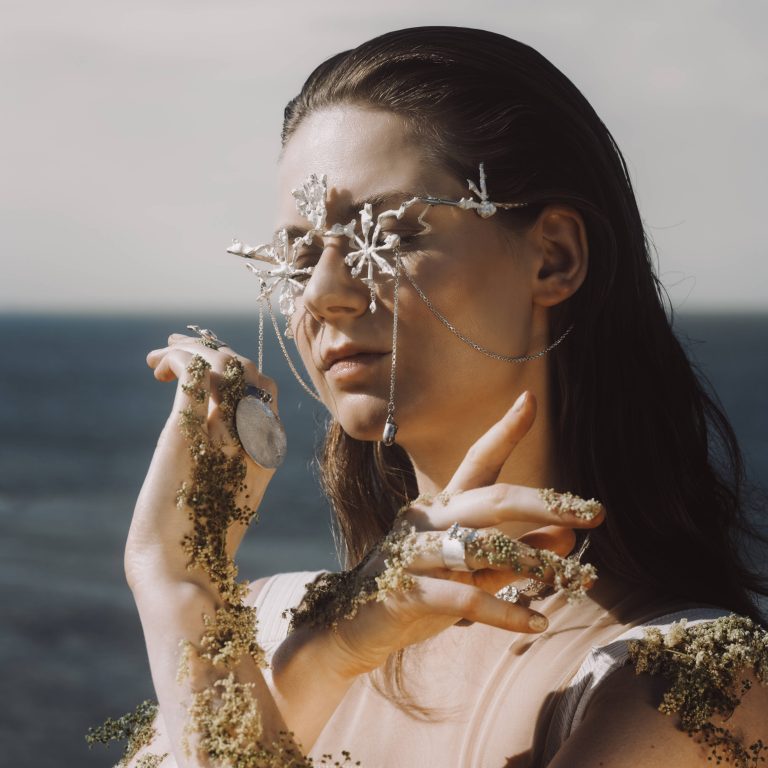If Judith Parts’ debut album Meadowsweet comes off as skeletal and bare, then rest assured that that is intentional. The Estonian artist, multi-instrumentalist, and producer has honed down her music to be only what is required to tell her story. A record of bells and whistles this is not. Pianos creak, bows shudder across cello strings, multi tracked voices warp alongside each other, and electronic effects burble like a quietly simmering primordial soup. You can often hear each individual component gently unfurling itself; with the minimal layers, it’s not hard to lose track of what is happening across the 11 tracks here.
Despite this and the album’s glacial pace and tempos, Meadowsweet’s central story takes a few listens to unearth. Separated into six chapters, the album takes inspiration from Parts’ roots, her ancestral lineage, and her Estonian heritage. “Nettle Field” is preceded by a two minute clip of windy landscapes and Parts’ grandmother talking about the benefits of the titular plant in her native language. Like many other segments of the album, it’s a small chapter to bring focus to a particular area of importance in Parts’ life. Here it hones in on the healing properties of the flora and fauna, as passed down through her family so as to highlight hereditary knowledge and how it can be used to process multi-generational pain.
Chapter 1 (entitled “The Dream”) is but a single track consisting of “Underwater Love”, a Björkian combination of simmering, watery sounds and electronic fizzles. It’s moony and imbued with a romantic streak, despite its fraying edges. Elsewhere on “Family” (another single-track chapter called “The Illusion”), Parts sounds dazed over a somnolent waltz on a piano. “Let’s play at home / Let’s play family,” she invites with an emotionless timbre, the cracks gradually showing themselves and tears hiding behind her eyes. “Let’s just hope that it is real,” she adds. Come “Burn Like Witches” (“Chapter 4 – The Anger”) a seething tone emerges aside piano notes descending down a scale as starry electronic glisten in the distance. “All the strong women in your life / you burn like witches,” she indicts with morphed and altered voices alongside her, like a coven of convicted ancestors backing Parts up.
Following the narrative that Parts has constructed does add another layer to dissect from listening, but equally there’s only so much extra intrigue and detail one can glean from it. Meadowsweet is a multimedia album – the delicate, earthy jewellery captured on the cover by Claudia Lepik coupled with the video introductions from photographer Todd Richter, videographer Pille Kannimäe, and stylist Liisa-Chrislin Saleh – but the additional elements feel like brief addendums to observe momentarily. The introduction videos add relatively little information, despite their pretty and complimentary earthy tone. Altogether listening to Meadowsweet feels like an art installation in the wrong context.
This affects the listening experience itself too. The album is often languorously paced, but its sequencing doesn’t serve up any favours. The second chapter “The Melancholy” is three instrumental tracks of pretty but lacking music, going from the plodding, creaking piano of “København”, to the searching and dissonant strings on “November”, to the gloomy lounge jazz of “Samsø”. These are instrumental exercises in deliberate motion, and as gorgeous as the textures are, they only offer so much replay value.
It’s the opening title track of Meadowsweet that is perhaps the best takeaway. Lonely low-pitched voices and desolate synths capture a ponderous solitude as Parts hits on an alluring cadence with the melody. It is but the introduction to a story sprinkled with details for the listener to piece together. Meadowsweet’s deliberate tone speaks to the sobering reflections Parts is making of her lineage, and while it is undoubtedly a considered ode to where she came from and who got her there, it is unfortunately that little too sedate for others to find an entry point to connect with her.

